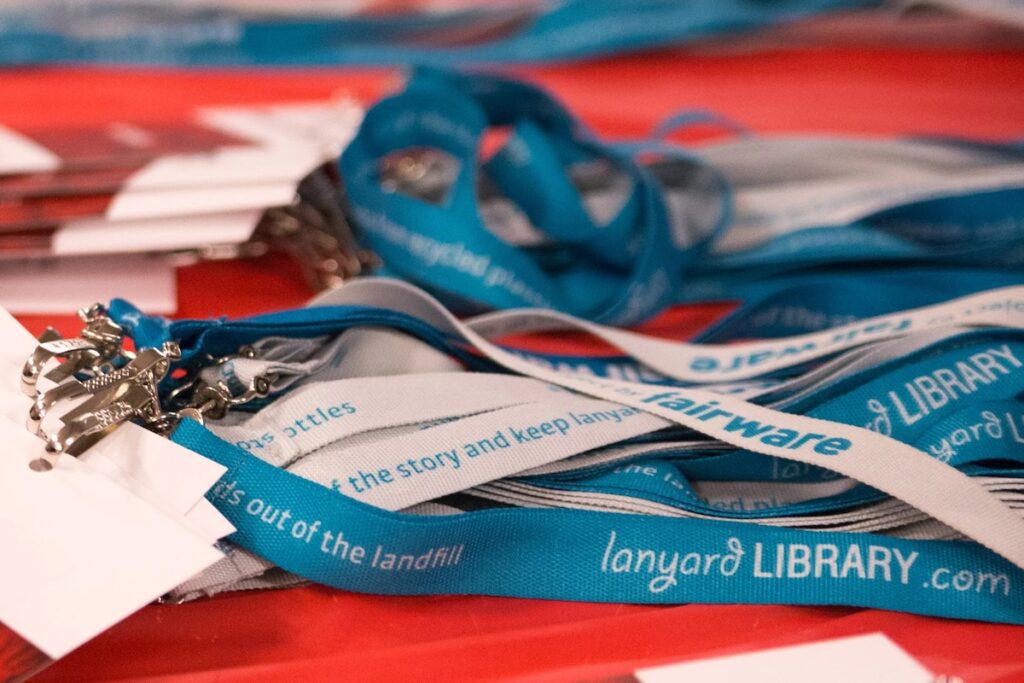
Skift Take
Events create 2.5 pounds of landfill-bound waste per person per day. Eliminating things like swag, water bottles, and lanyards can go a long way toward delivering more sustainable events.
According to Meet Green, a sustainable event management agency, conferences produce landfill waste and add an average of 389 pounds of carbon dioxide equivalent (CO2e) emissions per day to the atmosphere. This is bad news for the planet.
The good news is that making your events more sustainable doesn’t have to be overwhelming. You could stop doing a lot that attendees won’t miss—and they might even prefer it that way.
Here are five things you can drop for your next event.
1. Animal-Based Foods
The United Nations says that “animal-based foods, especially red meat, dairy, and farmed shrimp, are generally associated with the highest greenhouse gas emissions.”
“Reducing food waste and plant-rich diets are two of the most important, basic steps all in-person event planners can take to act on climate,” said Shawna McKinley, principal, Clear Current Consulting.
She points to TED, which only serves lower-impact proteins, including vegan and vegetarian options. Various studies show that vegetarian and vegan diets produce fewer greenhouse gas emissions than diets that include meat. Encouraging vegetarian menu
Tracy Stuckrath, founder of thrive! meetings & events, recommends basing menus around organic, local, and seasonal ingredients. They require less energy-intensive growing practices and transportation and support local farmers.
She also stresses the importance of asking attendees about their dietary restrictions. “There is no need to order an attendee a steak when they are vegan or follow a religious dietary practice,” said Stuckrath.
Surplus food should also be donated. This needs to be coordinated in advance, ensuring the venue will do it, and local companies will take it, said Stuckrath.
Another of Stuckrath’s tips is emphasizing whole foods and minimally processed ingredients. She said these typically have a lower environmental impact than heavily processed, pre-packaged foods.
Regarding seafood, Stuckrath recommends sustainably sourced options and certified by organizations like the Marine Stewardship Council (MSC) or the Aquaculture Stewardship Council (ASC).
2. Unnecessary Travel
Travel is an event’s largest source of carbon emissions. Choosing locations closer to attendees helps reduce overall travel and deliver more sustainable events. Some companies provide incentives to attendees to take public transit.
Event planners should provide shuttle services to and from events, using fuel-efficient or electric vehicles to reduce emissions further. Additionally, promoting carpooling or ridesharing among attendees can help. Offer incentives.
A new partnership between event:decision and You.Smart.Thing will help planners create low-carbon journeys for events. Sustainable door-to-door travel planning is offered. This global system recommends personalized low-carbon journey options, records mode choices, accounts for multimodal routes, and curates a visitor experience that encourages sustainable travel.
3. Single-Use Items
Single-use items should be eliminated wherever possible. For example, use reusable dishes and flatware instead of disposables.
Stuckrath recommends water stations instead of bottled water and encourages attendees to bring their own reusable cups or bottles.
Substitute cut flower arrangements with succulent plants or fresh fruit that can be donated.
Another area of waste is swag. Often, these logoed items collect in one’s closet unused and ignored, only to be eventually tossed.
Eco-friendly, responsibly sourced giveaways are becoming increasingly popular. For ideas, see “Swag Has New Swagger: Eco-friendly Giveaways for Meetings.”
CES is a show that is committed to sustainability. It upcycles wherever possible. More than 1 million square feet of carpet, more than 33,000 square feet of magnetic banners, and more than 5,660 square feet of vinyl banners were recycled and repurposed. They were turned into tarps, hockey rink liners, and outdoor movie screens.
IMEX is another event that has sustainability as one of its core values. Its goal is to deliver net zero events by 2030. At its Las Vegas show, it donates tables, chairs, desks, counters, carpets, shelves, signage, banners, electronics, and floral arrangements to the local community.
4. Plastic Lanyards
Event badges are a big part of meetings and conferences. They help with identification and networking with peers. They are also often not recycled, ending up in landfills.
More sustainable events address this issue in multiple ways.
With this in mind, promotional product company Fairware created a lanyard lending library of thousands of lanyards that can be borrowed. Shipping is not included; they expect at least 85% to be returned. The lanyards are then washed and prepped for the next event. The company encourages clients and users to share photos of the lanyards on social media.
At Caesars Entertainment’s inaugural Global Wellness Summit, attendee badges and daily notes were printed on handmade paper embedded with wildflower seeds to plant and recycle.
5. Guesswork
Before planning a sustainable event or conference, it is important to set event sustainability goals first. A baseline is needed, and specific objectives need to be established to gauge performance.
Data helps, said Stuckrath. Particularly historical consumption reports. What did attendees eat and not eat? What percentage attend meal functions? For one of her clients, only 50% of attendees participate in breakfast and lunch since many go out for those meals. Knowing this saves a lot of money and overproduction of food.
For example, TED has also partnered with Klimato to report on the amount of CO2e used in the food it serves.
In addition, many products and services are designed to help planners calculate event-related carbon emissions at all levels. The Institute for Sustainable Events recently released a comprehensive review and comparison of nearly 40 greenhouse gas tools, calculators and apps being marketed for events.
Related
Photo credit: Fairware / Fairware
👇Follow more 👇
👉 bdphone.com
👉 ultraactivation.com
👉 trainingreferral.com
👉 shaplafood.com
👉 bangladeshi.help
👉 www.forexdhaka.com
👉 uncommunication.com
👉 ultra-sim.com
👉 forexdhaka.com
👉 ultrafxfund.com
👉 ultractivation.com
👉 bdphoneonline.com




